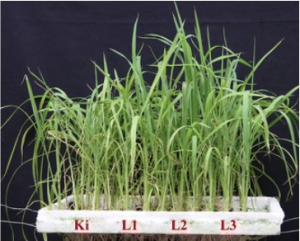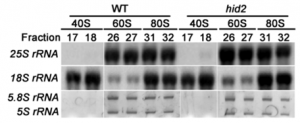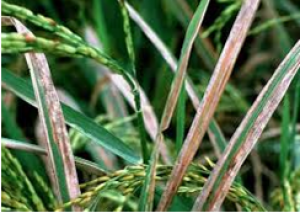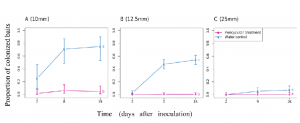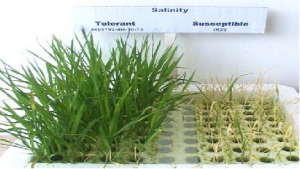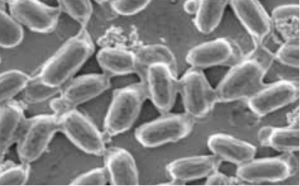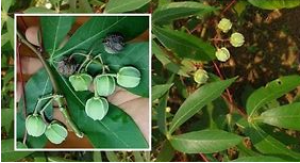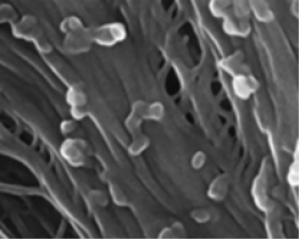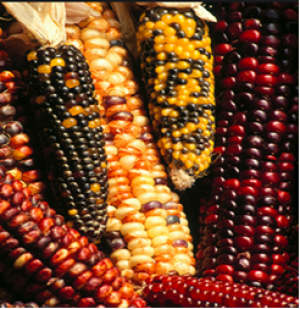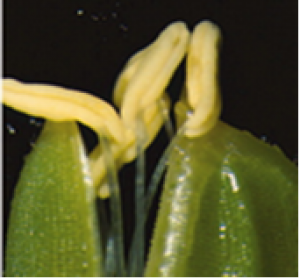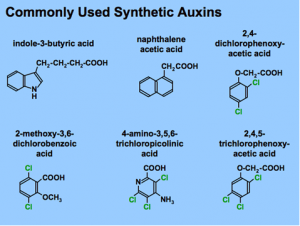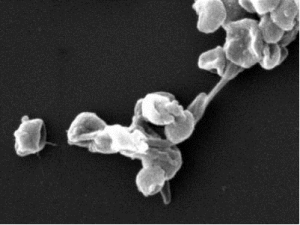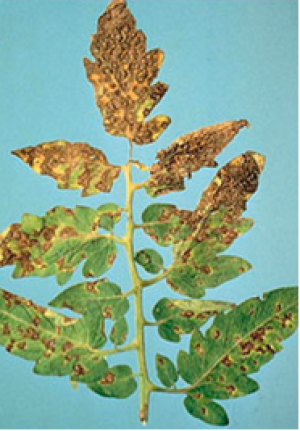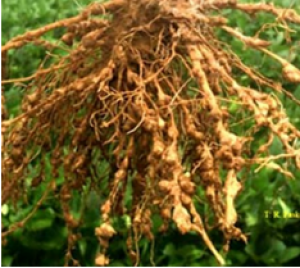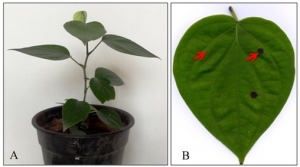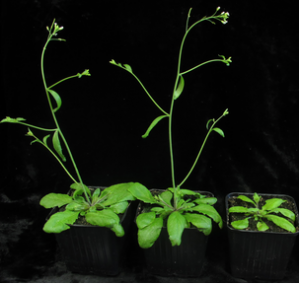|
A parasitic nematode releases cytokinin that controls cell division and orchestrates feeding site formation in host plants
Monday, 2015/10/19 | 15:40:53
|
|
Shahid Siddique, Zoran S. Radakovic, Carola M. De La Torre, Demosthenis Chronis, Ondřej Novák, Eswarayya Ramireddy, Julia Holbein, Christiane Matera, Marion Hütten, Philipp Gutbrod, Muhammad Shahzad Anjam, Elzbieta Rozanska, Samer Habash, Abdelnaser Elashry, Miroslaw Sobczak, Tatsuo Kakimoto, Miroslav Strnad, Thomas Schmülling, Melissa G. Mitchum, and Florian M. W. Grundler AGRICULTURAL SCIENCES SignificanceSedentary plant-parasitic cyst nematodes are microscopic roundworms that cause significant yield losses in agriculture. Successful parasitism is based on the formation of a hypermetabolic feeding site in host roots from which the nematodes withdraw their nutrients. The host cell cycle is activated at the site of infection and contributes to the formation of the syncytium. Here, we provide genetic evidence that nematode-derived cytokinin is involved in activating the host cell cycle during infection. Our findings show the ability of an animal to synthesize and secrete a functional plant hormone to establish long-term parasitism. AbstractSedentary plant-parasitic cyst nematodes are biotrophs that cause significant losses in agriculture. Parasitism is based on modifications of host root cells that lead to the formation of a hypermetabolic feeding site (a syncytium) from which nematodes withdraw nutrients. The host cell cycle is activated in an initial cell selected by the nematode for feeding, followed by activation of neighboring cells and subsequent expansion of feeding site through fusion of hundreds of cells. It is generally assumed that nematodes manipulate production and signaling of the plant hormone cytokinin to activate cell division. In fact, nematodes have been shown to produce cytokinin in vitro; however, whether the hormone is secreted into host plants and plays a role in parasitism remained unknown. Here, we analyzed the spatiotemporal activation of cytokinin signaling during interaction between the cyst nematode, Heterodera schachtii, and Arabidopsis using cytokinin-responsive promoter:reporter lines. Our results showed that cytokinin signaling is activated not only in the syncytium but also in neighboring cells to be incorporated into syncytium. An analysis of nematode infection on mutants that are deficient in cytokinin or cytokinin signaling revealed a significant decrease in susceptibility of these plants to nematodes. Further, we identified a cytokinin-synthesizing isopentenyltransferase gene in H. schachtii and show that silencing of this gene in nematodes leads to a significant decrease in virulence due to a reduced expansion of feeding sites. Our findings demonstrate the ability of a plant-parasitic nematode to synthesize a functional plant hormone to manipulate the host system and establish a long-term parasitic interaction.
See: http://www.pnas.org/content/112/41/12669.abstract.html?etoc PNAS October 13 2015; vol. 112 no. 41: 12669–12674
Fig. 1. Activation of cytokinin signaling in Arabidopsis roots on nematode infection. (A) Cytokinin-dependent expression of TCSn:GFP in Col-0 plants on H. schachtii infection at 4 (J2), 6 (J3), and 10 (J4) dai, respectively. (Left) Differential interference contrast (DIC). (Center) GFP. (Right) Merged image of DIC and GFP. (B) Cytokinin-dependent expression of ARR5:GUS in Arabidopsis roots on H. schachtii infection at 3 dai. N, nematode; S, syncytium. (Scale bar, 100 µm.) |
|
|
|
[ Other News ]___________________________________________________
|

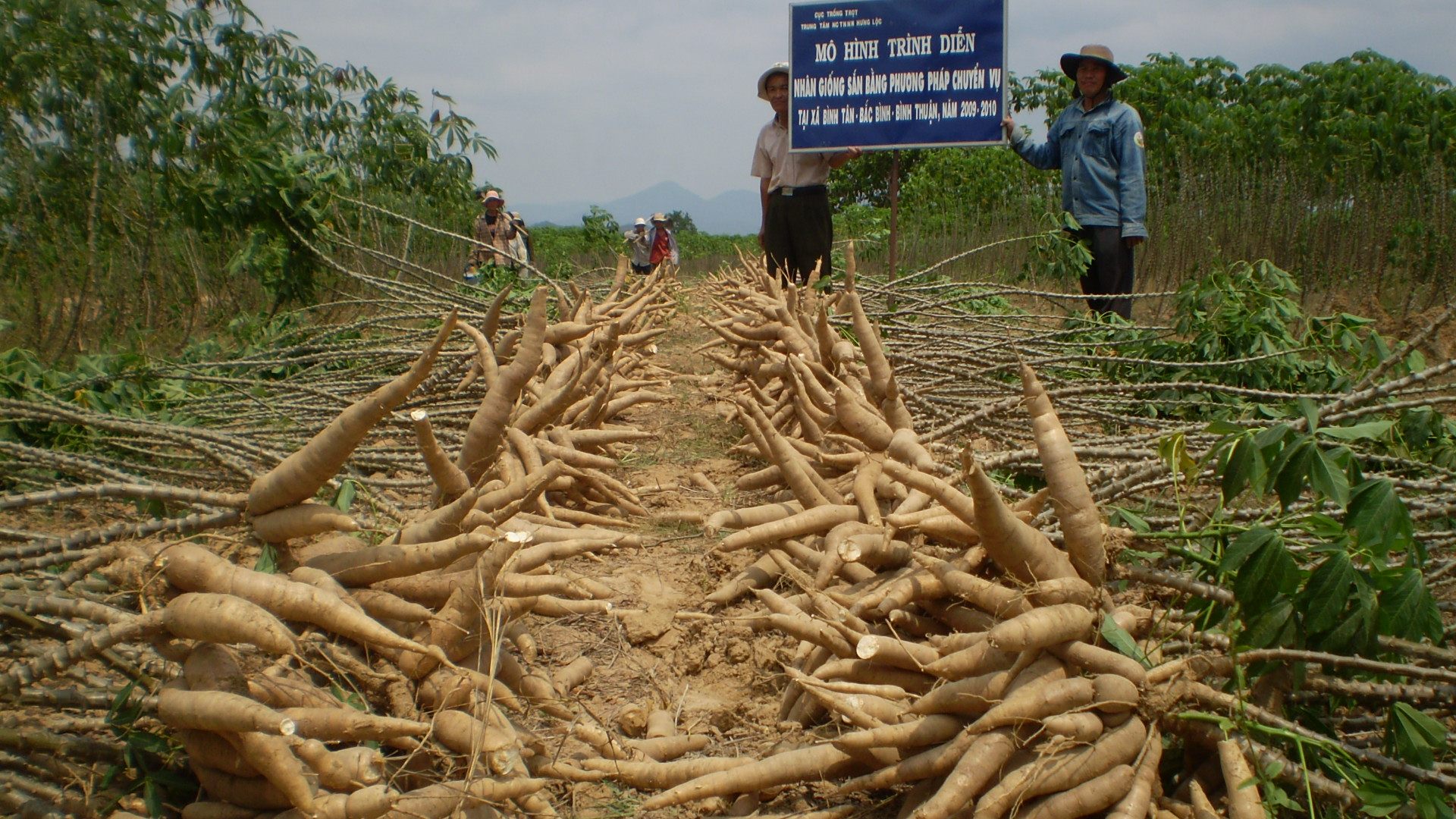
 Curently online :
Curently online :
 Total visitors :
Total visitors :
(17).png)
